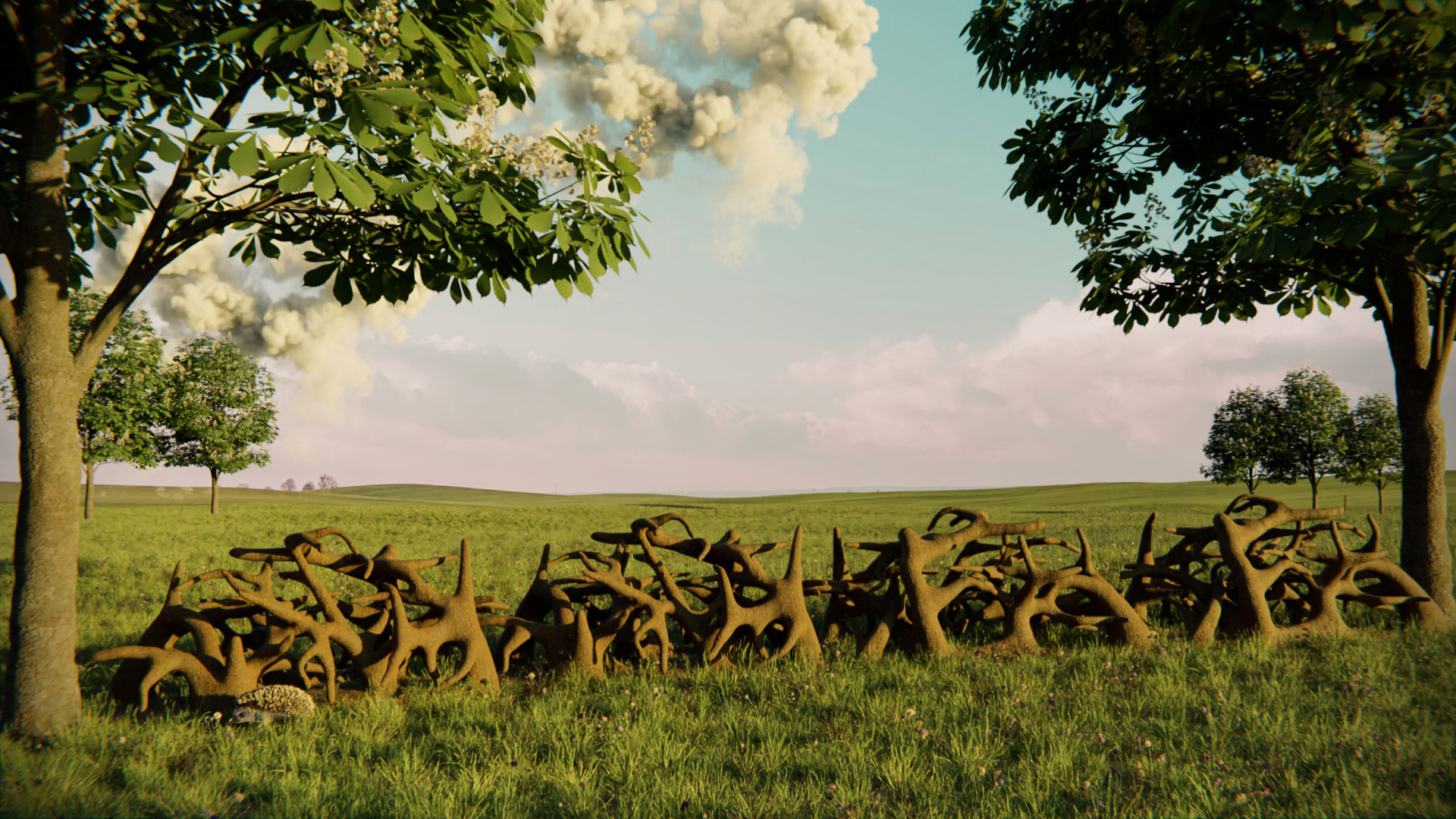
fendge_
The „fendge“ is an artificial hedge element developed to support the restoration of fragmented ecosystems in rural landscapes. Hedges used to provide safe corridors for species moving between habitats in rural areas. However, the increasing use of agricultural machinery has led to a drastic decline in hedgerows and therefore biodiversity. Based on proposals for the restoration of hedgerows, we have developed a solution to combat biodiversity loss by bridging the time gap between species‘ needs and the growth of an ecologically functioning hedgerow.
Fendge is an intelligent 3D-printed structure made of organic material that provides an instant hedge function and immediately maintains a symbiotic relationship with the hedge plants. Based on previously collected data, different variations of Fendge can be created that differ according to geographical details, weather conditions, ecosystems and the needs of the inhabiting species.
As a basis for the implementation of the „Fendge“, we designed an interactive guide for agricultural and renaturation operators to generate the desired functions and dimensions in the best possible way. The project aims to demonstrate the potential of technical uses in the renaturation of ecosystems and the importance of design research for the sustainable development of agriculture.
publications
Gebker, M., Wieland, S. (2023). Designing for temporal ecologies [Conference talk]. Designing Temporal Ecologies Conference, Edinburgh, Scotland.
Wieland, S., Gebker, M. (2022). Fendge: bridging temporalities of biodiversity rehabilitation [Conference talk]. Digital Ecologies Conference, Bonn, Germany.
Gebker, M., Wieland, S., Pschetz, L. (2022). Designing temporal ecologies [Conference talk]. Anthropocene Times Conference. Lancaster University, England.
Project website: http://www.temporaldesign.eca.ed.ac.uk/2022/03/31/fendge/

